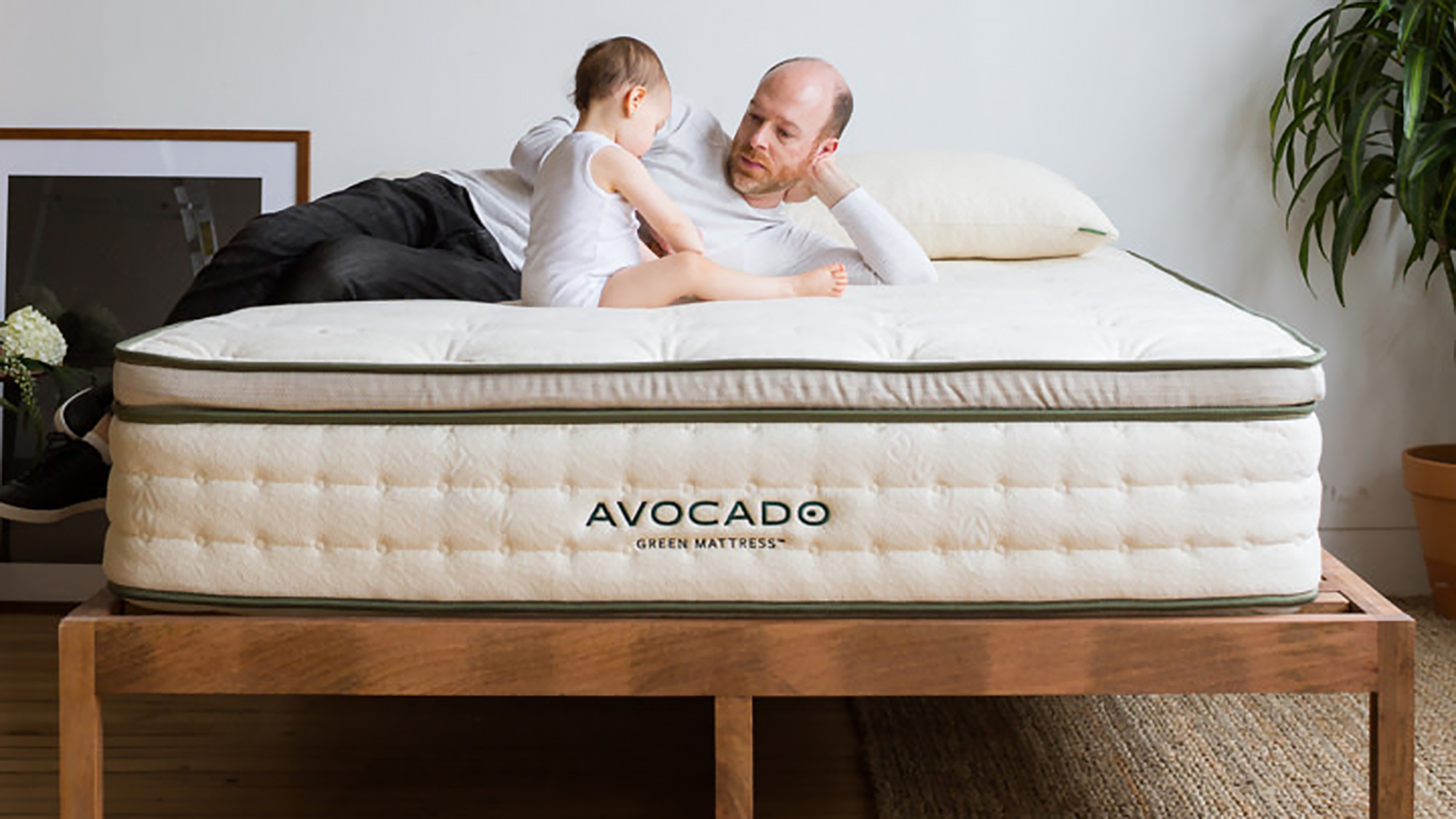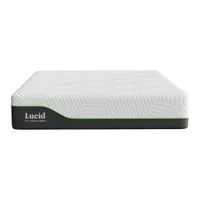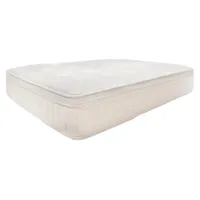Latex vs all-natural latex mattress: Is there a difference and should you buy one?
Everything you need to know about synthetic and natural latex mattresses

Latex mattresses are growing in popularity, thanks to their durability and hypoallergenic properties - but what is the difference between synthetic latex vs all-natural latex? And which is better for your sleep?
We've tested a range of latex beds while compiling our best mattress guide, so we've become familiar with the benefits and disadvantages of both latex types. And that's looking beyond the obvious price difference – all-natural latex is often significantly more expensive that its synthetic counterpart.
In this guide, we'll be exploring what both synthetic and all-natural latex mattresses are, including how they're made. We'll also take a look at how the differences between latex foams can influence your sleep, so you can choose a latex mattress that suits your needs.
What is a latex mattress?
Synthetic latex is a man-made product that mimics the consistency and feel of natural latex. Crafted from petroleum-based chemicals, these materials are essentially baked into a dense polymer foam. In some cases, natural latex and synthetic latex are mixed together to create a blended latex foam.
Synthetic latex has a firm feel that suits back and stomach sleepers, although blended latex can have a range of sleep feels. While it lacks the eco-credentials of a natural latex bed, synthetic and mixed latex are typically the cheapest latex options, with a queen often costing between $600 and $1,200.

What is an all-natural latex mattress?
Natural latex begins as sap from the rubber tree. This sap is then mixed with non-toxic materials, whipped until frothed, and then set into a foam. The setting process determines the difference between dunlop and talalay latex. Latex is firm and supportive, but with a naturally breathable build. It's also a top pick for those seeking an eco-friendly bed. However, natural latex is expensive – expect to pay upwards of $1,200 for a queen.
When choosing an all-natural, non-toxic mattress, it's important to know your way around mattress certifications. Certifications, such as GOLS (Global Organic Latex Standard), can help you determine which mattresses are made using sap-based latex, and which brands are simply applying eco-sounding words to synthetic beds. Learn more about certification with our guide to understanding organic mattresses.
Get instant access to breaking news, the hottest reviews, great deals and helpful tips.

What are the pros of a latex mattress?
Synthetic latex was actually developed later than natural latex, but it's become a popular bedding material, particularly due to the low cost. Here are some reasons you might choose a synthetic latex mattress...
1. Lower price
Synthetic latex can be significantly cheaper than all-natural latex, making it a good choice for anyone who wants the feel of latex at a lower cost. Synthetic and blended latex mattresses are typically priced from the mid-range to upper mid-range bracket, so depending on the brand, you might spend somewhere between $800 and $1,400 for a queen. Shop the mattress sales and you can potentially pick up a synthetic latex mattress for even less.
2. Safe alternative for latex allergy sufferers
Mimicking the feel of natural latex but without the rubber sap base material, synthetic latex mattresses are a suitable alternative for those with rubber allergies. However, if you do suffer from a latex allergy, make sure to avoid mattresses with blended or mixed latex. While it's not always obvious, these beds do contain natural latex and can potentially trigger an allergic reaction.
3. Uniform feel
Crafted under controlled industrial settings, synthetic latex has a uniform finish with minimal risk of imperfection. You know what you're getting with synthetic latex and there's very little deviation. This means it can look better than all-natural latex, which sometimes suffers from air bubble blemishes.
4. Versatile
Synthetic latex is a dense material with a firm feel that makes it a good choice for stomach sleepers and back sleepers who prefer a sturdy support. However, if you pick a blended latex mattress, you can choose between a variety of sleep feels. Blended mattresses are typically created with proprietary ratios, meaning depending on the brand, your blended latex mattress can have a completely different feel.
What are the cons of a latex mattress?
While a lower price and uniform feel are definite benefits of synthetic and blended latex, there are some downsides to this mattress material...
1. Environmental impact
Synthetic latex is made from chemicals such as styrene and butadiene, and it's essentially a type of plastic. The process of creating synthetic latex can have a negative environmental impact due to the use of non-renewable resources, and when you're finished with the bed, synthetic latex can be hard to recycle.
2. Off-gassing
Unwrap a synthetic latex mattress in a box and you might notice a strong chemical smell that can hang around for many weeks. This is known as mattress off-gassing, and it refers to an unpleasant odor that occurs when the vapors from VOCs (Volatile Organic Compounds) are released into the air.
Mattress off-gassing isn't particularly dangerous but it can sometimes result in minor allergic reactions. If you're sensitive to smells it can also lead to headaches and disrupted sleep, at least until he scent has faded. The quickest way to clear mattress off-gassing is to open a window and air the room.
3. Reduced durability
Like all synthetic foams latex will eventually start to deteriorate. You will typically need to replace a synthetic latex mattress after around six to 10 years of use, which means it lacks the increased longevity of an all-natural latex mattress. So although often a cheaper purchase upfront, you might find you spend more on synthetic mattresses over time.

What are the pros of an all-natural Latex mattress?
Once a hugely popular mattress material, natural latex fell out of favor when cheaper synthetic foams came along. However, with more consumers interested in purchasing an eco-friendly mattress, latex beds are again growing in popularity. Here are some reasons to consider a natural latex mattress...
1. Durable
Strong, sturdy, and buoyant natural latex is known for its impressive durability, able to withstand frequent use and bounce back into shape. Many of the best organic mattresses use natural latex and offer increased warranties for more peace of mind when purchasing. While even a natural latex mattress won't last forever, you might get potentially 10 to 20 years of use from the bed without losing supportive comfort.
2. Breathable
Natural latex has in-built ventilation, allowing air to circulate the mattress during the night. Increased air flow helps keep the bed at a neutral temperature, meaning you won't wake up sweaty and uncomfortable. For this reason, natural latex mattresses are often a good choice for hot sleepers.

3. Eco-friendly
Made from the sap of the rubber tree, all-natural latex is a healthier mattress material for the environment (especially if it has GOLS certification). All-natural latex can be recycled and uses fewer chemicals than memory foam – although the best memory foam mattresses should all come with CertiPUR-US certification indicating lower chemical usage.
Increased durability also adds to the eco-friendliness of a latex mattress. When you don't need to replace your bed so frequently, there's less waste, including during the manufacturing process.
4. Limited off-gassing
As all-natural latex doesn't contain the same chemical components of synthetic latex (or other types of man-made foam), a latex mattress doesn't have the traditional 'off-gassing' we associate with a foam bed. You might notice a slight smell from a natural latex bed, but this should be subtle and fade quickly.
5. Bouncy sleep feel
Natural latex comes from the rubber tree, so it's no surprise this mattress material has a bouncy and buoyant feel. This is great for anyone who likes to move around in bed, as the mattress will quickly adapt to your new shape without the sink of memory foam.
6. Hypoallergenic

All-natural latex mattresses are dust mite-resistant and antimicrobial, meaning that its provides a natural barrier against bacteria, mold, and mildew. It's also hypoallergenic, so it will help dispel bedroom irritants, such as dust mites and pollen, making it a popular choice for allergy sufferers. However, if you have a latex allergy, it will still trigger a reaction (more on that below).
What are the cons of an all-natural Latex mattress?
There are many benefits to an all-natural latex mattress, but this material does come with its downsides. Here are some reasons to avoid a natural latex mattress...
1. Expensive
Due to a combination of raw ingredient costs and an expensive manufacturing process, all-natural latex mattresses are typically investment beds. You can expect a latex mattress to cost in the upper mid-range price bracket, with many latex mattresses costing most than $1,500 for a queen. However, some brands are bucking that trend, with options like the Awara Natural Hybrid Mattress utilizing natural latex and costing under $1,000 for a queen.
2. Unsuitable for latex allergy sufferers
One of the biggest downsides of a natural latex mattress is that it's not suitable for those who suffer from a rubber allergy. Reactions to latex can range from uncomfortable to life-threatening, so if you're worried you have an allergy avoid this type of mattress and speak to your doctor.
3. Potential inconsistencies
The sap used to create natural latex can sometimes develop small air pockets and inconsistencies during the foaming and setting process, unlike synthetic latex which typically has no deviations. These inconsistencies are usually only an aesthetic concern, but it does mean a latex mattress might not look as good as a synthetic alternative.

Latex vs all-natural latex mattresses: Which should you buy?
Buy a synthetic latex mattress if...
✅ You're on a budget: Synthetic and blended latex mattresses are typically significantly cheaper than all-natural latex beds, making them the better choice for shoppers looking to save.
✅ You have a latex allergy: All-synthetic latex mattresses are suitable for those with a rubber allergy, but always check that this isn't a blended mattress, which can contain natural latex.
✅ You want a range of feels to choose from: While synthetic latex is often firm with limited bounce, if you opt for a blended bed, there are various sleep feels to choose from, depending on the ratio of synthetic to natural used by the brand.
Buy an all-natural latex mattress if...
✅ You want an eco-friendly bed: The manufacturing process of all-natural latex is better for the environment than petroleum-based synthetic foams, and once you're finished with your bed, natural latex is typically easier to recycle.
✅ You want a durable build: Natural latex is known for having a long-lasting build that can continue to support you for many years, so while expensive, you can get a lot of use out of an all-natural latex mattress
✅ You prefer a bouncy feel: Buoyant natural latex doesn't have the 'sink' of many synthetic foams, making it easy to move around on and providing a quick response that will contour to your body if you change positions in the night.
3 top-rated latex mattresses to shop today
1. Lucid Latex Hybrid Mattress: from $329 at Lucid Mattress
The Lucid Latex Hybrid Mattress is a budget-friendly mattress that pairs natural latex with layers of memory foam and springs for an airy and bouncy feel. A queen will set you back $479.99 if you choose the thinner firm feel, while the 12-inch medium feel has an MSRP of $579.99 for a queen. Keep an eye out for limited sales, as Lucid regularly offers discounts that only last for a day.
2. Avocado Green Mattress: was from $1,399 now $1,189 at Avocado
Our favorite organic mattress, in our Avocado Green Mattress review we found this latex hybrid offers cooler sleep and a supportive feel. The current 15% off sale is one of the best we've seen from Avocado, reducing a queen to $1,699 (was $1,99). It's been running for a little while now, so shop before it ends.
3. Naturepedic Concerto Plush Pillow Top Organic Mattress: was from $1,699 now $1,359.20 at Naturepedic
During our Naturepedic Concerto Pillow Top Mattress review our tester described this bed as being a "dream mattress for side and back sleepers" with the temperature regulation also earning high marks. This is very much a premium choice, but occasional sales can help you save, with an impressive 20% discount reducing a queen from $2,799 to $2,239.20.

Ruth is an experienced Senior Staff writer at Tom’s Guide, covering all things sleep and mattresses. She writes to help people sleep better, from how-tos to the latest deals to mattress reviews, and has interviewed an array of experts who share her passion. She is also our specialist on memory foam — she’s flown around the world to see memory foam being made — and leads our hotel mattress content. She has a deep interest in the link between sleep and health, and has tried enough mattresses, from Helix to Nectar to Simba, to know the right bed really can make a difference to your wellbeing. Before joining the team at Tom’s Guide, Ruth worked as a sleep and mattress writer for our sister website, TechRadar.



